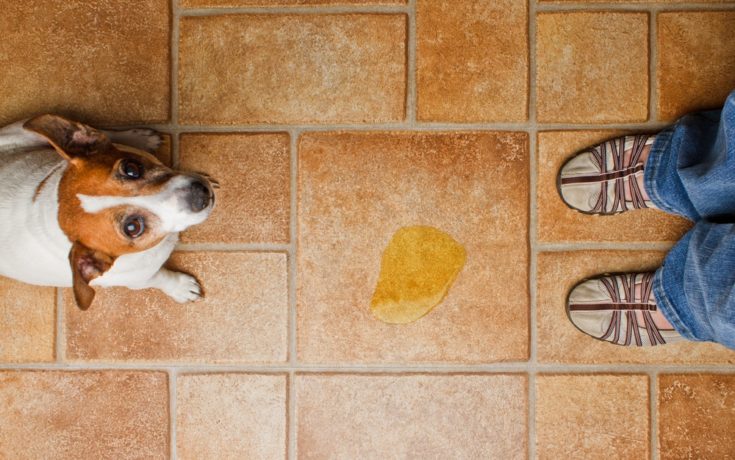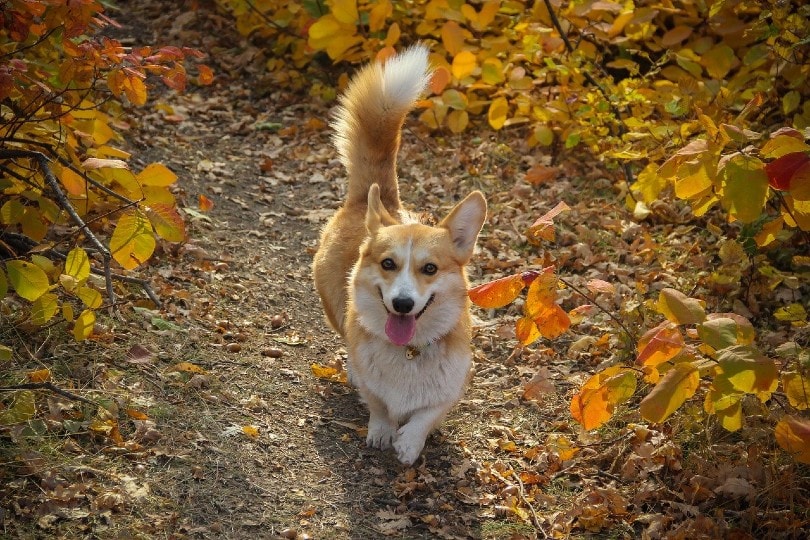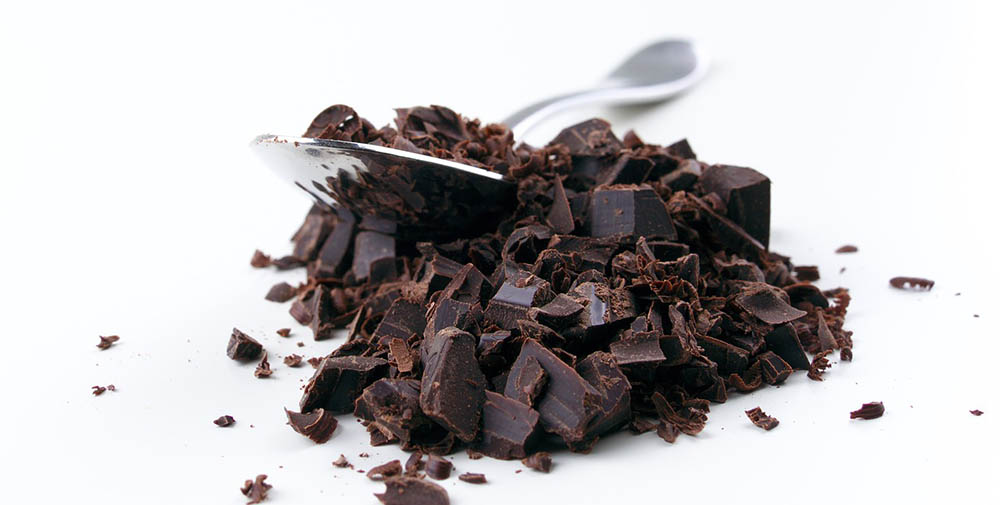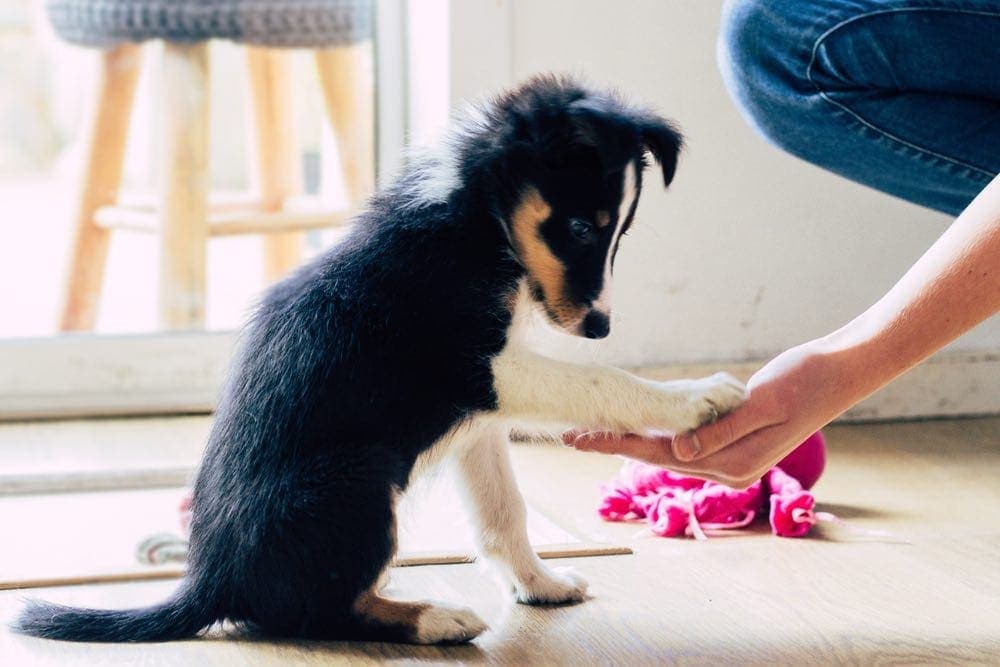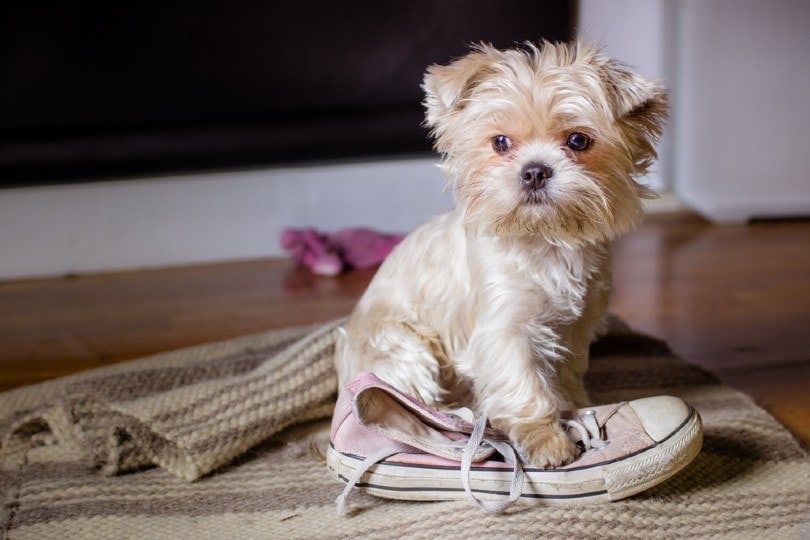You’ve probably heard about using a crate to housebreak your dog. The concept is simple. A canine’s instinct is not to soil where he sleeps since that could alert potential predators where he is. Remember that he’s letting his guard down and is at his most vulnerable. When you put him in a cage, it provides the same protection.
But what if crate training isn’t a possibility? Can you housebreak an older dog?
Some dogs won’t take to a crate for a myriad of reasons. Bad experiences as a puppy often follow them into adulthood. Your pet may never have learned housebreaking manners or has spent his entire life outside. The good news is that you can still train him successfully, even if you don’t have a crate. Here’s how to potty train an older dog without a crate:
The 4 Steps to Potty Train an Older Dog Without a Crate:
1. Creating His Space
There is no housebreaking rule that you must use a cage. Any confined space will work just fine. You can block part of a room with a puppy gate. Bear in mind that it has to small space so that your dog can’t foul one part of it and still have a clean place to sleep. That defeats the purpose of this modified method of crate training.
The next thing is to make it comfortable. We suggest putting an indestructible pad on the floor to define your dog’s space. Please don’t put anything inside of it that he can chew. Remember that if he stays in his place for long stretches, he’ll likely get bored and take out his frustrations on whatever he can find. Put some of his favorite toys there, instead.
Your goal is to create positive associations between your pup’s designated area. When you close off the gate, give him a treat. Never use it as a punishment for bad behavior.
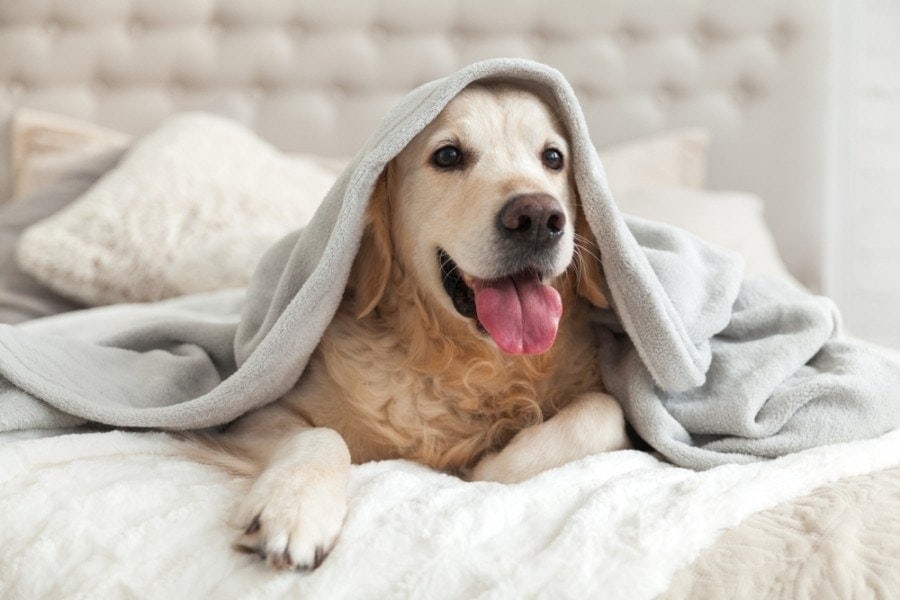
2. Set a Schedule
It’s essential to understand that your task is likely two-fold. You must housebreak your older dog and undo any bad habits he may have picked up along the way. The best way to conquer these objectives is with a consistent routine.
You have several things going for you to make it easier. First, your dog is older and more intelligent than a puppy. He has learned to make associations between different stimuli and the ways he responds to them. Second, he’s further along in his physical development. He can control his bladder longer than a pup.
The obstacle you face is gaining your new dog’s trust. Puppies love anyone, especially someone who has treats to share. Creating a routine is one way to forge that bond. He learns what to expect from you so that he can let his guard down.
3. Mealtimes and Housebreaking
Biology can help you house train your pet if you also make a consistent feeding schedule. That means no bowl of food set out all day long. It’s harder to monitor your dog’s intake. Besides, you still need to keep track of his appetite to make sure he’s eating enough as he transitions into his new home.
At each meal, put down your dog’s food and give him about 20 to 30 minutes to eat. Then, pick up the bowl and take him outside. After he does his business, give him a treat, and praise him. Follow this routine every time, staying to the same schedule. You might even take a cue from Pavlov and have a signal for feeding time. You can set an alarm on your smartphone for the bell.
The benefit of going this route is that it can help with begging in between meals. You can also work with the existing routine in your household. If someone comes home at a particular time every day, make it the signal for a feeding and the subsequent walk outside, afterward.

4. Building on the Schedule
Of course, your dog may need to go outside more frequently. Therefore, we suggest using other cues to signify time outdoors, such as when he wakes up from a nap, the first thing in the morning, and just before bedtime. You can also establish a verbal cue like saying “Outside!” as you two leave the house. Over time, your pooch will associate these words with time in the yard.
Preventing Accidents
Let’s face it. There is going to be an accident or two, even with an older dog. The essential thing is not to scold him for doing what comes naturally to him. Instead, take him outside if you catch him in the act and reward him when he’s finished. Many breeds are sensitive to stern reprimands and will cower. That’s the last thing you need, especially if your pup is a rescue dog.
Thus, part of the training starts with you.
It’s your job to keep an eye on your pup. Dogs aren’t that difficult to read. They are transparent when it comes to signaling that they need to go outside. He may sniff around the house or start pawing at the ground. Bring him to the door, saying your verbal cue as you go.
Make sure to clean up the stain thoroughly with a product that will also remove any odors. Dogs are creatures of habit. They will go back to places that they’ve used before. It’s one reason that your pet will stop at every bush and lamp post on his walks. The same advice applies to his bedding and floor pad.
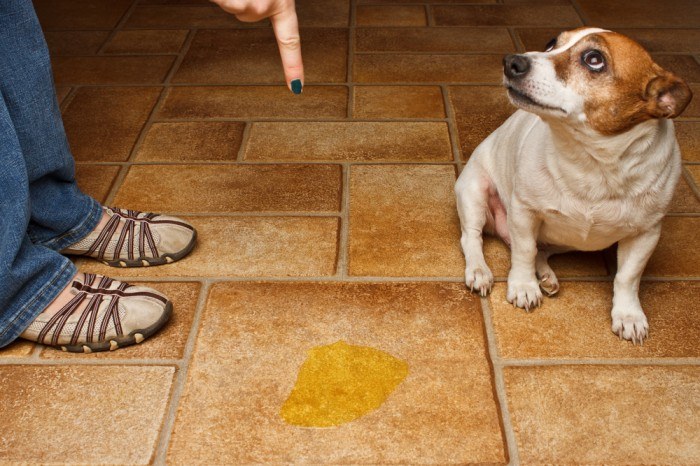
Exploring the Rest of His House
There will come a day when your dog can leave his confined area and join the rest of the family. The point of giving him his space was to teach him that it’s his home. When he’s made that association, it’s time to make the entire house his digs. Watch him closely for the first few times. Look for the telltale signs that he needs to go outside.
Once your dog has gotten the hang of going outdoors to do his business, give him a treat when he comes back inside the house. That way, he’ll learn to associate food with your home so that his instincts kick in to keep it clean.
Final Thoughts About House Training an Older Dog
Housebreaking a new pet never is a pleasant task, no matter how necessary it is. Luckily, nature has you covered with ways to help your dog learn how to become a welcome part of the family. Patience and consistency are essential. Once he’s figured out what you want, he’ll be eager to please you. Make it easier for him with a routine with plenty of treats along the way.
Featured Image: MCarper, Shutterstock

